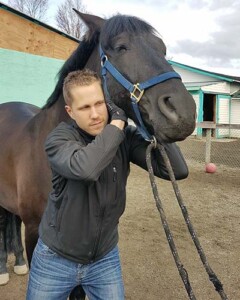So you’ve been in college for a year or two now, or maybe you’ve completed a bachelor’s degree, and you’re feeling like maaaaaybe this isn’t what you thought it was. If you have a medical background, you might discover the approach to health care isn’t the approach you’d like to take or doesn’t encompass everything you think is important.
Maybe you are dissatisfied with your current career and just looking for a change. You might have been injured and experienced chiropractic care for yourself, and you want to be the change you can now see in yourself.
If you’ve decided a chiropractic degree might be your next step, what can you expect after you graduate? How much do chiropractors make, anyway?
The answer: It depends.
According to an article in Forbes, the Bureau of Labor Statistics’ Occupational Employment Statistics puts the average income for U.S. chiropractors at $85,870. The same article also lists the top 10 states where chiropractors can expect an income closer to $100,000 a year.
More current estimates from hiring websites such as ZipRecruiter, GlassDoor and Indeed put the average salary around $60,000 annually.
One of Life West’s own unpublished alumni surveys finds that just out of college, the starting salary is really closer to $45,000, but there’s room to grow once you earn your stripes.
That’s a big range, and it’s safe to say that geography is certainly one of the influences over total income, as well as years in practice. What else might influence your ability to climb to a higher salary?
New graduates just starting out may work as associates for other chiropractic offices, getting their feet wet and learning the business.
Then, a few years out, things might change.
You might decide to take more of a leadership role as an associate, or maybe start your own practice. You might even decide to pivot a bit and look at different partnerships. Here’s a look at how different Life West graduates pursued their careers after graduation, and what that meant for them.
Mychal Beebe, DC and Tyler Evans, DC

Dr. Tyler Evans

Dr. Mychal Beebe
This married couple graduated from Life West in 2010 and 2011. In a recent interview for the Life by Life West series, Dr. Mychal Beebe describes what life has been like for them.
The two took positions as associates at two separate practices in Seattle after graduating, and eventually moved into more leadership positions. “We were clinic directors and running things on our own,” she said.
They got to a point where they could make a choice: Buy out the practices where they were, or develop their own practice. Maybe somewhere else.
They chose what they both say was the riskier option. Newly married, still new to practice, they left their practices in Seattle that were thriving and opened a really small practice on the other side of the country with a loan and what they had in their savings.
“When we moved across the country we went to an apartment that was less than 1,000 sq ft,” Dr. Beebe said. “We were making six figures each in Seattle, and we downsized big time” in order to make things work.
But within four years, their practice sees well over 200 patient visits each week. They just moved into a new space, a condo unit of 3,300 square feet, and they rent out half of the space to a naturopathic office.
The two laugh now — it was no small sacrifice to get to where they are now. In fact, after their honeymoon in 2015, the next vacation they had together was in 2019. But that sacrifice in the early years of establishing their practice has led to a comfortable place, where their office now employs a handful of people.
Kevin Carey , DC

Dr. Kevin Carey
A lot of people think that when they get out of school, they should prop up a sign and people will start coming through the door, Dr. Kevin Carey says. Especially in the health care profession, many graduates expect to be raking money in from their first day.
It takes time to build up a patient base, he says, and there’s a direct trade-off: the more people you serve, the better you can do.
He began his career as a chiropractor working four days a week, 9-hour days. That first year, he earned $70,000.
But realizing this practice didn’t have the focus he wanted, he moved to another office as a contractor to learn pediatric care. It was still four days a week, but he took a $20,000 pay cut.
Now five years out of school, Dr. Carey is part of a family practice, and he estimates in the 2 ½ days a week he works for that practice, he earns about $100,000 a year. In addition to the family practice, he also practices animal chiropractic, traveling to see horses in his area of British Columbia, Canada and caring for animals at his wife’s veterinarian clinic.
He’s taken time to try out different business models, and he’s put in a lot of effort to figure out what works for him and his family.
“There aren’t many other careers where you can do that,” he says. He organizes his days meticulously so that his appointments are lined up when he works in the family practice, and he’s opted to join as an associate there and pay a percentage of his earnings, because he has other irons in the fire.
“If you want to be successful, you have to be willing to put in work at the beginning,” he said. “I put a ton of time in, didn’t see a big reward at first, but from everything I did, it got me to where I am now.”
Brandon Linatsas, DC

Dr. Brandon Linatsas
Dr. Linatsas took over his dad’s 30-year-old chiropractic practice after graduating from Life West. Even with the advantage of starting in an established practice, one that he had grown up, there was still work to do.
He says he is still building on where the two of them started together nearly 8 years ago, when his dad was toward the end of his career, and he was just starting. He brought new energy and new patients to the practice, but also new ideas and a new mission.
Dr. Linatsas has since moved his office from its original 900 square feet to a 2,500 square foot space, and just before the pandemic, he moved into a 5000 square foot building. That growth has been spurred on by a new mission, to raise the vibration of those around him, to revolutionize health care, and to be an epicenter of change.
“Part of my vision is to grow the practice more, but it made me realize that I can’t have a personality-based success plan. I can only see so many patients. People need to come for the mission of the office, not me,” he said.
He says that chiropractic school was one of the most fun but also most stressful situations he has ever been in, but he looks back on it fondly. “Every day, I know I was born to do what I’m doing,” he says. “I hope everyone who graduates has that feeling. It’s totally worth it.”


